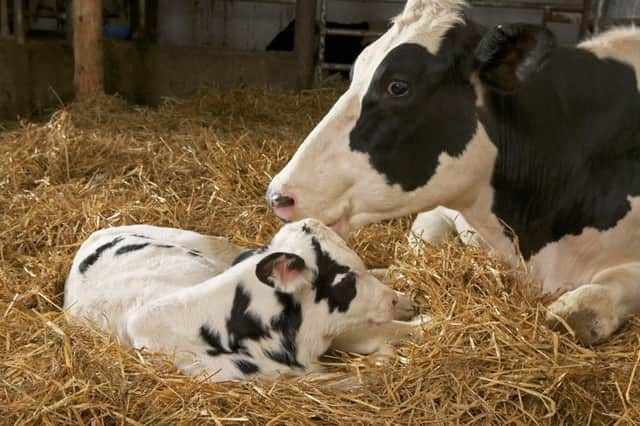Right pregnancy, right time


Each heifer and cow with a uterus destined to become pregnant should from here on in be seen as a valuable business unit. Consideration must now be given to whether that animal should contribute to the bottom line by creating your next business unit with better earning potential - a dairy heifer; or generate a potential cash crop by being bred to beef.
Rearing costs are often cited as being the second largest expense on farm and so there has been some recent focus on optimising breeding and genetic plans to deliver the optimum number of replacement heifers required by the business. This is primarily addressed by considering:
Advertisement
Advertisement
The length of the rearing period by assessing if age of first calving can be reduced.
Optimising the volume of replacement dairy heifers using a combination of sexed dairy genetics and beef genetics.
Although simple in theory, the planning of investment within your business units (cows) needs careful consideration. Planning should take into account a number factors such as the potential for dairy heifer losses through the rearing period and any requirement for herd growth or dairy heifer sales. What risk is there of affecting reproductive efficiency? What is the market for your potential beef calves and which breed should you consider based on factors such as gestational length, calving ease and data reliability? Are there disease risks that could limit your route to market for beef calves e.g. TB.? When will you realise the return on your new strategy? It can seem overwhelming however there are a number of programs available which many breed and genetic advisors and consultants are skilled in using to assist you when trying to understand many of these “what-if” scenarios.
Of course this strategy requires identification of your “best” business units to invest in and yield your future dairy replacements. We often assume that all younger animals are genetically superior to their older herdmates, however this is not always the case. Every age group will have a bell shaped distribution curve ranging from high to low genetic potential. So when considering which animals to breed replacements from this should be done by selecting animals based on their real genetic value rather than their assumed genetic superiority if maximum genetic progress is to be achieved.
Advertisement
Advertisement
In summary if you are really content with super reproductive efficiency on your farm, or wish to review your overall dairy heifer rearing costs consider if there are opportunities to optimise your heifer replacement policy by reviewing the time it takes for them to become profitable, creating the optimal number of replacement business units and ensure they have best earning potential!